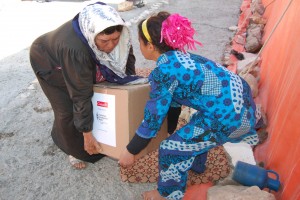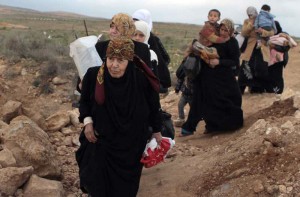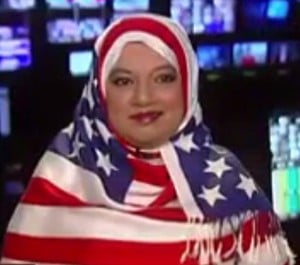I write this post as an expression of solidarity, because as someone who lives in Turtle Island (Canada) and has close ties to Latin American immigrant and refugee communities, I find myself needing to speak out. I come from a country where the situation of violence and poverty since the mid-90s (and before) has driven many people to immigrate or seek asylum. At the same time, my country has been home to survivors of WWI, the Holocaust, the Spanish Civil War, the occupation of Palestine, the persecution of Mennonite communities, and other tragedies.
I have grown increasingly disappointed not only at Conservative Canadian policies regarding immigration and refugee issues, but also at some Latin American and Muslim communities in Canada, where the attitude has been one of dismissal and lack of support. As a Salvadorian friend recently told me, no one leaves their country as a refugee out of choice. In fact, for many, having to leave their country is a tragedy in itself. These experiences are not to be dismissed, excluded or overlooked.
The Syrian refugee crisis is not a new development. Since 2011, millions of Syrian citizens have been forced to flee their homes following the civil war outbreak, ISIL and the involvement of Western military forces (a map of the conflict is available here). Along the way we have seen depictions of Tunisian women practicing “Sexual Jihad” in Syria, misleading portrayals of Syrian women in contemporary soap operas and gendered images of Syrian female fighters. Some of these representations have been countered through art projects addressing Syrian women’s experiences of violence and the resistance stories of Syrian women in the conflict.

Nonetheless, whereas we have seen a lot of coverage of the Syrian conflict, it was not until last week that we were reminded of what the situation really looks like. Last week Alan Kurdi’s picture made waves in the media and social media spaces. Alan, a three-year-old refugee, drowned along with his 5-year-old brother in the Mediterranean Sea while his family tried seek refuge outside Syria. His family aimed to eventually reach Canada; thus, his death quickly became associated with Canada’s recent stands on immigration and refugee issues.
Canada’s department of Citizenship and Immigration (CIC) came under fire, after media outlets published the Kurdi’s family ordeal. Abdullah Kurdi, the father of the boys and the only survivor of his family, said that his refugee application had been rejected by the Canadian government but that CIC offered him Canadian citizenship after the media kerfuffle that followed the release of Alan’s picture. The Minister of CIC, Chris Alexander, said Kurdi’s claims aren’t true.
Regardless of whether or not the story is true, Canada’s immigration and refugee policy has grown increasingly problematic since the Conservative Government took power in 2006. In 2012 the government passed Bill C-31, which made changes to the Immigration and Refugee Protection Act. According to the Canadian Council for Refugees, the changes represent a step back in refugee policy. Also, Rabble has argued that the bill makes it difficult to claim refugee status, discourages family reunification and endangers the status of refugees who had already been accepted.
Some of these changes were already visible last year when Canada failed to fulfill its commitment to helping resettle 1,300 Syrian refugees by the end of 2014. The government was also accused of discrimination after it was made clear that Canada would prioritize religious and ethnic minorities. Costas Menegakis, parliamentary secretary to Immigration Minister Chris Alexander, defended these policies by saying,
We have seen countless examples in recent years of people being persecuted for their religious beliefs. We will prioritize persecuted ethnic and religious minorities, those at demonstrated risk, and we will make no apologies for that.
And, as the refugee issue following Alan’s death becomes a matter of Canadian electoral politics, it is discouraging to see how Syrian women and Muslim women figure in these discussions, which often involve applying gendered and Islamophobic approaches to refugee policy.
Many organizations including NGOs and the UN have identified that gender matters in refugee settings. Women refugees face institutional challenges and they may be more vulnerable to sexual violence and to gendered-structural violence. The UN reports increased challenges for Syrian women who are the main, and often only, financial providers of their families. Also, women and girls are exponentially affected by sexual exploitation in refugee settings.
However, instead of discussing the ways in which patriarchal and gendered structures should be dismantled within the refugee system, the international community has often taken the “womenandchildren” approach, which deems women child-like, agency-less and powerless. New Zealand recently found itself caught in this rhetoric after MP Tracey Martin defended her party’s policy on prioritizing women and children refugees. This type of discourse does not only create disparities in terms of whose life is more valuable, but it reinforces the idea that women are vessels of children, regardless of their circumstances. Further, it also contributes to the idea that women who take part in armed conflict must be inherently brainwashed, something that I have explored in the past.
Another complicated layer is that of religion. For over a decade now it has been acknowledged that Muslim women in Western countries are more likely to face Islamophobia. To be clear, this is often related to whether or not the women wear hijabs or/and niqabs, and it is further influenced by other types of intersections such as ethnic background, citizenship status, class, level of education, etc. These intersections, however, tend to go unacknowledged.
Since a number of countries have seen a rise in Islamophobic, anti-immigration and/or racist attitudes upon the “threat” of receiving refugees (here, here and here), one can only wonder, what will the situation of refugee Muslim Syrian women be like after settling in these countries, including Canada? At the end of the day, the refugee crisis is more than just the attempts to bringing people to Western countries… Housing, social services, welfare, access and opportunities need to be present for refugees to truly thrive. When it comes to refugee women, it is also key to acknowledge that many of them are affected by an overlap of patriarchal practices between the “oppressor” and the “saviour.” Without this awareness, refugees may fall in the system’s cracks.
We can go left and right saying that the West has little responsibility to these refugees and that receiving them is a “demographic concern,” as Asra Nomani, a Muslim journalist in the US, suggests or that the West has been quite generous to refugees, as Robert Fisk recently wrote. But we cannot forget that the Syrian refugee crisis and all its gendered and Islamophobic/racist sides are the result of a broader context of Western colonialism and imperialism. It is often very convenient for these writers to pretend that they are not immigrants or/and settlers of Indigenous lands.
On Canada’s side at least I am relieved to see “Refugees Welcome” mobilizations (these have also taken place in Europe). But the people who attend these are usually people of colour, marginalized folks, Indigenous peoples, activists and/or academics. You know… the already “converted.” More work is needed to create alliances and to develop solutions, something that I would like to work on with Latin American and Muslim organizations that have a hard time working in solidarity with others.
Let’s remember, refugee issues are not charity work. It is about solidarity. As Eduardo Galeano puts it, “Unlike solidarity, which is horizontal and takes place among equals, charity is practiced as a top-down approach, which humiliates that who receives it and never alters, even a bit, the power relations behind it.”
I hope that if we can draw something positive from this tragic situation it is people’s realization that refugee and immigration policy “as-is” in Canada, and perhaps around the world, is neither sustainable nor humane. And I hope that in Canada we will further continue to make the connections among the different oppressions faced by minority groups. Although different, refugees, immigrants and Indigenous peoples may face similar experiences of poverty, violence, discrimination and dispossession because of the way their histories have been influenced by colonial and imperial processes. Such an acknowledgement is essential to building solidarity and producing change in refugee policy in Canada.












